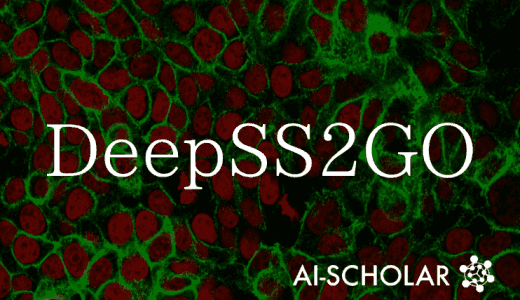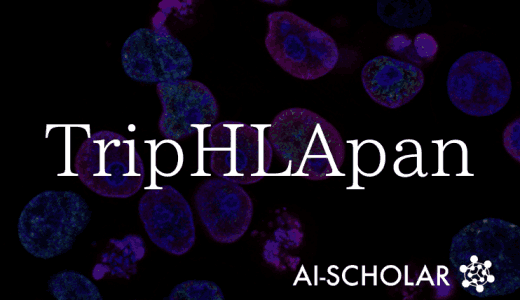![SA-FedLoRA] Communication Cost Reduction Methods For Federated Learning](https://aisholar.s3.ap-northeast-1.amazonaws.com/media/October2024/sa-fedlora.png)
SA-FedLoRA] Communication Cost Reduction Methods For Federated Learning
3 main points
✔️ Propose an efficient method to reduce communication costs in federated learning by up to 93.62%.
✔️ Dynamic allocation of parameter budgets and simulated annealing methods for high model convergence efficiency.
✔️ Development of new approaches with potential practical applications in areas where data privacy is important, such as in the medical and financial fields.
SA-FedLora: Adaptive Parameter Allocation for Efficient Federated Learning with LoRA Tuning
written by Yuning Yang, Xiaohong Liu, Tianrun Gao, Xiaodong Xu, Guangyu Wang
(Submitted on 15 May 2024)
Comments: Published on arxiv.
Subjects: Machine Learning (cs.LG); Distributed, Parallel, and Cluster Computing (cs.DC)
code:
The images used in this article are from the paper, the introductory slides, or were created based on them.
Summary
Advances in AI technology have led to the widespread use of large-scale pre-training models, but this requires huge amounts of data and high communication costs. This is a major challenge, especially in the medical and financial fields where privacy protection is required. Of note here is Federated Learning (FL), a method in which multiple data owners collaborate to train models without sharing data, enabling effective model building while protecting privacy.
SA-FedLoRA (Simulated Annealing-based Federated Learning with LoRA tuning) is an innovative method to solve the communication cost problem in FL. through two stages, the initialization stage and the annealing stage, and dynamically allocates parameters to significantly reduce communication costs while facilitating model convergence.
Experimental results show that SA-FedLoRA achieves higher performance with up to 93.62% reduction in communication parameters compared to traditional methods using the CIFAR-10 and medical datasets.SA-FedLoRA has great potential for AI applications, especially in areas where data privacy is important especially in areas where data privacy is important. This new approach is expected to enable efficient and privacy-conscious federated learning.
Related Research
The SA-FedLoRA presented in this paper is based on the latest research in Federated Learning (FL) and Parameter Efficient Fine Tuning (PEFT). Let's take a look at some of the major related research in these areas.
Prior Learning in Federated Learning
FL first appeared in 2016 as FedAvg. The method involves multiple local clients training models on their own datasets and then aggregating their local models to build a global model; FedAvg was touted as an innovative way to collaboratively train models while protecting privacy.
With regard to the use of pre-learning models, they began in the field of natural language processing (NLP) and have been successful in many areas, including computer vision. For example, VisionTransformer (ViT) and SwinTransformer have been used as a means to improve the accuracy and robustness of FL due to their generality and ability to adapt to downstream tasks. Research is also underway to apply these pre-trained models to FL to streamline model training, which requires large data sets.
Parameter-Efficient Fine Tuning
Numerous studies have been conducted to improve FL communication efficiency. Typical methods include model compression and sharing of some parameters. For example, Low-RankAdaptation (LoRA) is a method of reparameterizing a small number of the parameters of a pre-trained model by decomposing them into low-rank matrices, thereby reducing communication costs while fine-tuning the model without sacrificing inference speed.
Other PEFT methods include Adapters and SelectiveMethods. Adapters are methods that add a small number of parameters between transformation layers and adjust only these parameters. Selective updating efficiently fine-tunes the model while maintaining performance by updating only the critical components in the model.
Integration of LoRA and FL
Recent studies have attempted to integrate LoRA into FL. For example, FedLora is a technique that reduces the communication overhead of FL by sharing the low-rank decomposition matrix of LoRA. However, the slow convergence at fixed low ranks and the risk of overlearning at high ranks call for dynamically adjusting parameter budgets. This is the challenge behind SA-FedLoRA.
Thus, SA-FedLoRA builds on existing FL and PEFT research and is a new approach to efficient federated learning through dynamic parameter adjustment.
Proposed Method (SA-FedLoRA )
SA-FedLoRA is divided into two main stages: the initialization stage and the annealing stage.
Initialization Phase
The initialization phase trains all pre-trained model parameters and introduces parameter regularization. The goal of this phase is to reduce drift between clients and accelerate convergence in the subsequent annealing phase. Specifically, each client updates all parameters and uploads them to the server. In doing so, the L2 norm distance between the global and local model parameters is minimized to maintain consistency toward the global optimal solution.
Annealing Stage
In the annealing phase, the pre-trained model is frozen and only LoRA modules are trained. This phase is divided into a "heating" phase and a "cooling" phase, with the heating phase allocating a high parameter budget for rapid convergence and the cooling phase gradually decreasing the parameter budget to prevent over-training.Specific parameter adjustments are made based on the "Simulated Annealing Method," which uses a high rank of LoRA in the initial rounds and gradually reduces the rank as the rounds progress. This maintains high performance while keeping communication costs low.
 Figure 1: Overview of SA-FedLoRA
Figure 1: Overview of SA-FedLoRA
Figure 1 illustrates the overall framework of SA-FedLoRA. The initialization phase aligns the parameters of the global and local models, and the annealing phase dynamically adjusts the ranks of the LoRA modules.
Algorithm for Initialization Phase
1. The server distributes pre-trained global models to clients.
2. Each client trains its model on a local dataset for a specified number of epochs and uploads the updated parameters to the server.
3. The server aggregates the parameters collected from the clients and creates a new global model.
Annealing Phase Algorithm
1. After the initialization phase is completed, the server distributes the weights of the LoRA module to the client.
2. Each client trains the LoRA module for the specified number of epochs and uploads the updated LoRA module weights to the server.
3. The server aggregates the LoRA modules collected from clients and creates a new global LoRA module.
The parameter scheduler is used to adjust the LoRA ranks during the annealing phase. Specifically, several scheduling strategies (e.g., cubic scheduler, linear scheduler, cosine scheduler) are applied to progressively decrease the rank as the round progresses, until the final rank is reached.
Experiment
To validate SA-FedLoRA, an experiment was conducted using the CIFAR-10 dataset and an actual medical dataset.

Experiments on the CIFAR-10 data set confirm that SA-FedLoRA maintains high accuracy while significantly reducing communication costs. Figure 3 shows the evolution of accuracy for each round of communication using different methods. The figure shows that SA-FedLoRA converges more quickly and achieves higher accuracy than the other methods.
 Table 2 shows that SA-FedLoRA reduced communication costs by 92.91% and improved accuracy by 6.35% compared to FedAvg. It also shows that FedBit was able to reduce communication costs but did not achieve sufficient accuracy.
Table 2 shows that SA-FedLoRA reduced communication costs by 92.91% and improved accuracy by 6.35% compared to FedAvg. It also shows that FedBit was able to reduce communication costs but did not achieve sufficient accuracy.
 For the medical dataset, SA-FedLoRA achieved superior accuracy and AUC scores while significantly reducing communication costs. Table 3 shows that SA-FedLoRA reduced communication costs by 91.27% and improved AUC by 8.26% compared to FedAvg.
For the medical dataset, SA-FedLoRA achieved superior accuracy and AUC scores while significantly reducing communication costs. Table 3 shows that SA-FedLoRA reduced communication costs by 91.27% and improved AUC by 8.26% compared to FedAvg.

Figure 4 shows a comparison of the AUC and accuracy of the different methods on the medical data set. Again, we can see that SA-FedLoRA shows superior performance.
Consideration
The results of the SA-FedLoRA experiment revealed the following points
Significant reduction incommunication costs:SA-FedLoRA has dramatically reduced communication costs, especially through the use of low-ranked LoRA modules. This allows FL to run especially in resource-limited environments.
Achievement ofhigh accuracy and AUC:SA-FedLoRA achieved high accuracy and AUC while reducing communication costs. This is due to the dynamic allocation of parameter budgets and the effective convergence achieved by the simulated annealing method.
Reduced client drift:Parameter regularization during the initialization phase reduced drift between clients and facilitated global model convergence. This improved FL stability.
Effectiveness of the annealing phase:dynamic rank adjustment during the annealing phase allowed for rapid convergence at high parameter budgets in the early stages and reduced communication costs while preventing overlearning in the later stages. This strategy has contributed significantly to maintaining model performance.
Based on these results, SA-FedLoRA is expected to be an efficient and effective new approach in the field of federated learning. In particular, it is expected to be applied in the medical and financial fields where privacy protection is important.
Conclusion
In this study, we proposed SA-FedLoRA, a new method that improves model convergence efficiency while significantly reducing the communication cost of federated learning (FL). Experimental results show that SA-FedLoRA achieves high accuracy and AUC while reducing communication costs by up to 93.62% compared to conventional methods. This method has great potential for AI applications, especially in the medical and financial fields where privacy is important.
Looking ahead, it will be necessary to verify applicability to more complex scenarios and diverse data sets. Further research is also required to optimize communication efficiency and computational load between heterogeneous devices. It is hoped that this will lead to the practical application of SA-FedLoRA in a wider range of fields and the further spread of federated learning technology.
Categories related to this article



![DrHouse] Diagnostic](https://aisholar.s3.ap-northeast-1.amazonaws.com/media/February2025/drhouse-520x300.png)


![[SpliceBERT] A BERT](https://aisholar.s3.ap-northeast-1.amazonaws.com/media/July2024/splicebert-520x300.png)
![[IGModel] Methodolog](https://aisholar.s3.ap-northeast-1.amazonaws.com/media/July2024/igmodel-520x300.png)